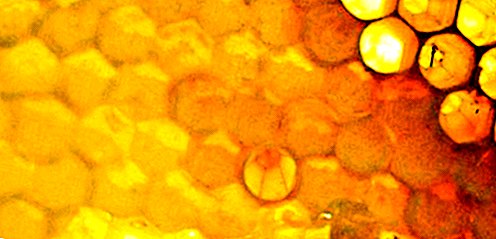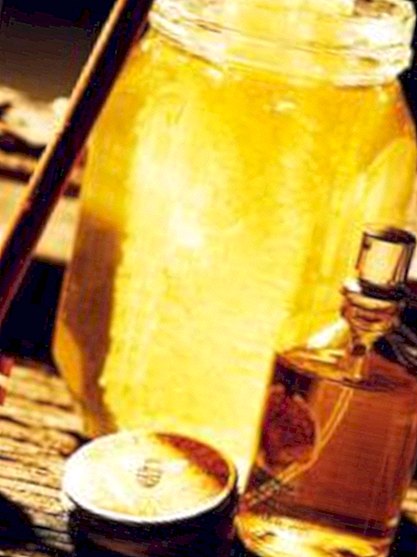Honey cosmetics: sweet for the skin

What would spring be without buzz?
First rays of sunshine, warmth on the skin, floral scent - spring is palpable with all senses. You can even hear him. Even on the Berlin Cathedral. Beehives are on the roof of the famous capital church. Beekeeping on house roofs and gardens has become a popular hobby in big cities. And sometimes almost to the cliché: In In-quarters belongs to the latte macchiato mother a beekeeper father. To keep the small honey collectors as pets is less profit thinking than nature conservation, because a few years ago, the global bee mortality began - with unpredictable consequences. Bees pollinate 80 percent of our plants worldwide. Without them, the harvests would be worse, fewer people could be fed. According to a recent study by the British University of Reading, the bee deficiency in Europe is even worse than previously thought: Not only that the sympathetic insects have to deal with the Varroa mite, environmental toxins and feed shortages by monocultures - by the rapidly growing crops for Biofuels (oilseed rape, soybean and sunflower) have increased demand for bees by almost 40 percent.
That honey is a precious, not natural raw material, is also becoming increasingly aware of beauty companies. Many therefore support beekeepers and thus bees. For example, natural cosmetics manufacturer Melvita had proclaimed "2013 as the year of bees" and is also involved in the "Germany buzz" campaign. The Body Shop promotes organic beekeeping in Ethiopia, Guerlain on the island of Ouessant and a bee project in Nantes. At Weleda there are "Jungimker" courses for children. The results of the funded projects flow into strikingly new or rediscovered products with honey, feet tender, hair silky, smoothing the complexion or softening the lips. Also in bath products, creams and shampoos and for depilation honey is used. "Bees are this spring as small helpers in the cosmetics industry highly in the course," says Linda Mittelstaedt of the press office of the natural cosmetics manufacturer Dr. med. Spiller.
One who realized years ago that paying attention to bees is New York photographer Burt Shavitz. The man with the white mustache lives in a converted turkey barn. In the seventies he moved to the countryside and became a beekeeper; In 1991 he founded the cosmetics brand Burt's Bees, the market leader for sustainable natural cosmetics in the USA.
What does the nectar do with the skin?
 © Jan Rickers
© Jan RickersHoney is versatile. The Egyptians and the Romans, who called it heavenly medicine, knew that. According to a study of the "skin report" honey acts antiseptic. In addition, the high sugar content binds moisture and thus reduces wrinkles. That's why he is popular in both moisturizers and anti-aging care. Its phytonutrients, the polyphenols (also in green tea), act as radical scavengers and thus protect against skin aging. The study also improves collagen neoplasm by stimulating the fibroblasts that make up the connective tissue. Not only honey, but also royal jelly, pollen, wax and propolis are used by the bee for cosmetics.
Which honey can do what?
"Honey is as different as wine," says Rosie Akester, International Community Fair Trade Senior Buyer of The Body Shop in London. If that's not a recommendation. Acacia honey has the highest fructose content, orange blossom honey contains the most glucose, thyme honey contains a particularly large amount of amino acids. The sugars glucose and fructose provide energy to the cells, and the amino acid proline improves the skin structure. In the optimal case, the ingredients complement each other. That's why Melvita recently launched a product with three types of honey.
Honey is not the same honey, neither in color nor consistency or even ingredients - in the thriller series "CSI" one could pinpoint its origin. The negative example shows how crucial the collection area of the bees is: In 2010, the Federal Institute for Risk Assessment (BfR) warned of rhododendron honey from the Turkish Black Sea coast, because it has a high content of the toxic plant substance grayanotoxin, which triggers stomach and intestinal complaints.
How natural is honey in cosmetics?
"For the cream, the same certified honey is used, which can be found in our outlets," says Melvita. Depending on the product, the honey content is between 1.5 and 5.5 percent. In order not to get a sticky texture, the mixing ratio with other raw materials in the formula is crucial. The difficulty with the naturalness of honey is that it is too natural for some people. This is how some people react allergic. To avoid this, z. B. at Nivea the honey prepared by freeze-drying.For other products, synthetic molecules are used from the outset, for example in perfumes. Honey fragrance is associated with the so-called gourmet fragrances. They remind of caramel or lemon cake the homeliness of a bakery. This is how a feeling of security should arise.










